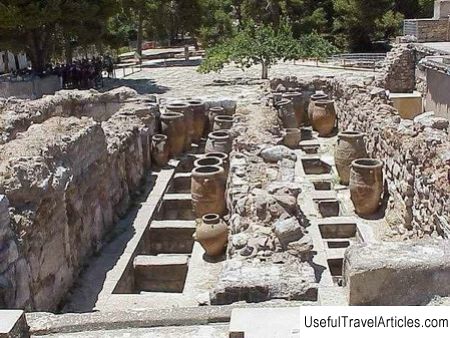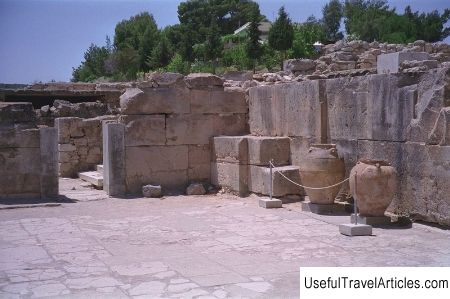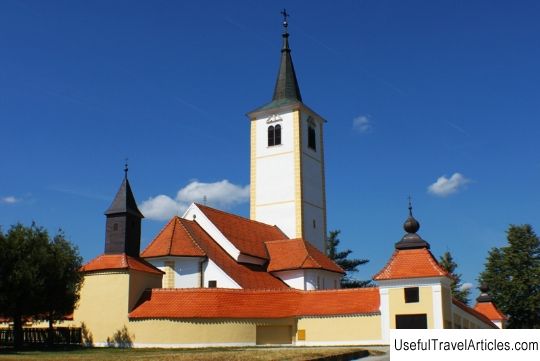Palace of Knossos (Knosses) description and photos - Greece: Heraklion (Crete)
Rating: 7,6/10 (876 votes) 
Palace of Knossos (Knosses) description and photos - Greece: Heraklion (Crete). Detailed information about the attraction. Description, photographs and a map showing the nearest significant objects. The name in English is Knosses. Photo and descriptionThe ruins of the Palace of Knossos are located 5 km east of Heraklion. The first palace was built around 1900 BC. 200 years later it was destroyed by an earthquake and it was rebuilt again, becoming more majestic and luxurious. In the XV century. BC. the palace finally collapsed due to another earthquake and fire. The palace was not only a royal residence, but also a religious and administrative center. In 1878, a merchant, an amateur archaeologist from Heraklion Minos Kalokerinos began excavating one of the warehouses. As a result, huge ruins of the Knossos Palace were found. The palace is a complex of buildings that are grouped around a large courtyard. They are located at different levels, connected by stairs and corridors, some of them go deep underground. Corridors lead to dead ends, transitions between floors are made in the most unexpected places, the layout of rooms defies common sense. The palace is not a monolithic structure, there is a rather extensive courtyard in its center. The floors of the palace rest on columns and are connected by stairs. Historians suggest that life in this palace was the most luxurious and diverse. This is confirmed by the countless surviving fragments and shards found among the ruins of Knossos. Hundreds of halls and rooms were intended for solemn receptions, served as chambers for the king and queen, dignitaries and court ladies, servants and slaves. Spacious workshops of tsarist craftsmen were also located here. Huge storerooms were discovered in the palace, a theater that can accommodate up to 550 people, venues for ritual bullfighting performances, well-designed sewerage and water systems, and even the first flush toilets in history. The oldest road in Europe, used only by pedestrians, began from the palace. In the throne room of the Palace of Knossos, griffins are depicted on the walls - mythical creatures with a lion's body, eagle's wings and head. The legends about the monstrous bull arose, apparently, not by chance. The walls of the Palace of Knossos are covered with numerous frescoes that are well preserved. On them, as well as on stone and gold vessels, images of a bull are constantly found: sometimes peacefully grazing, sometimes furious, flying at a gallop. The cult of the sacred bull was widespread on the island, but it is still not clear what religion was there. Among the drawings in many rooms of the palace, images of a double-sided hatchet are often found. It is a symbolic sign associated with the religious cult of the Cretan inhabitants. A double ax with a point in Greek is called "labrys". Scientists say that it is from here that the word "labyrinth" comes from, which was called the "house of the double ax" - the palace of King Minos.                      We also recommend reading Geological Museum (Museo Geologico) description and photos - Chile: Antofagasta Topic: Palace of Knossos (Knosses) description and photos - Greece: Heraklion (Crete). |




